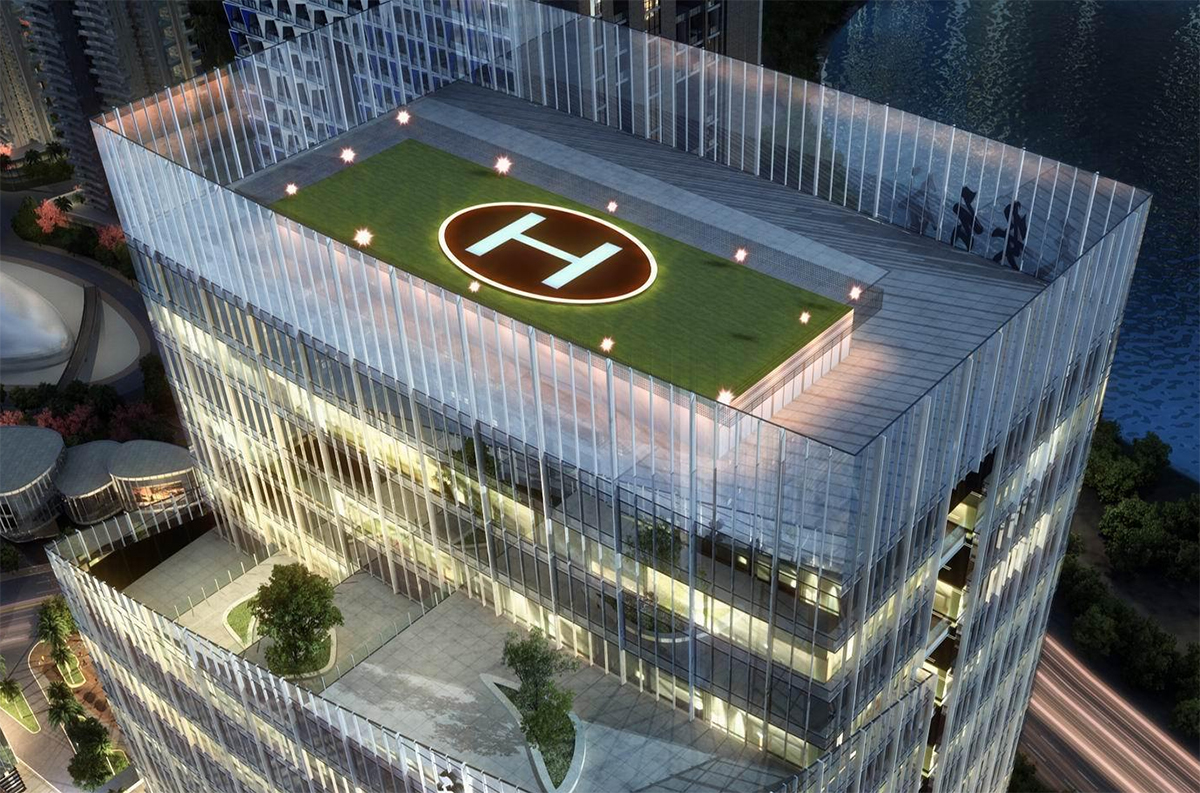Heliport lights provide visual guidance to pilots operating helicopters and some other vertical take-off and landing aircraft (VTOL) for approaching, departing, and moving around the airfield at aerodromes. A heliport consist of one or more helipads which are designated areas or platforms for takeoff, landing, or parking of helicopters. Aeronautical ground lighting (AGL) products are installed in the Touch-down and Lift-off (TLOF) area, the Final Approach and Takeoff (FATO) area and the Safety Area of a heliport. Collectively they provide helicopter operators with location, orientation and alignment information both at night and in low visibility conditions.
The AGL system consists of TLOF and FATO edge lights, white floodlights for TLOF illumination, helicopter approach path indicator (HAPI) systems, taxiway beacons, wind direction indicators, etc.
TLOF and FATO edge lights are located along the perimeters of the area declared for use as the helipad delineated by edge markings, and may be provided either by elevated or by inset light fixtures. FATO lights emit omnidirectional white or green light. FATO lights installed on square and rectangular areas are space at intervals of no more than 50 m. For any other shaped area, including a circular helipad, the fixtures should be installed at intervals of no more than 5 m with a minimum of ten lights. The TLOF perimeter lights, which are green in color, are spaced at intervals of 3 m or less for elevated heliports and 5 m or less for surface-level heliports. When the FATO and the TLOF are nearly coincidental FATO lighting may be ignored.
A HAPI system provides approach slope guidance to assist the pilot of a helicopter in flying a stabilized approach.
Taxiway lighting, usually elevated and blue in color, is part of the visual guidance lighting defining the lateral limits of the taxiway or apron.
Heliport lights should not exceed a height of 25 cm and should be inset when elevated fixtures would endanger helicopter operations.












Loading...